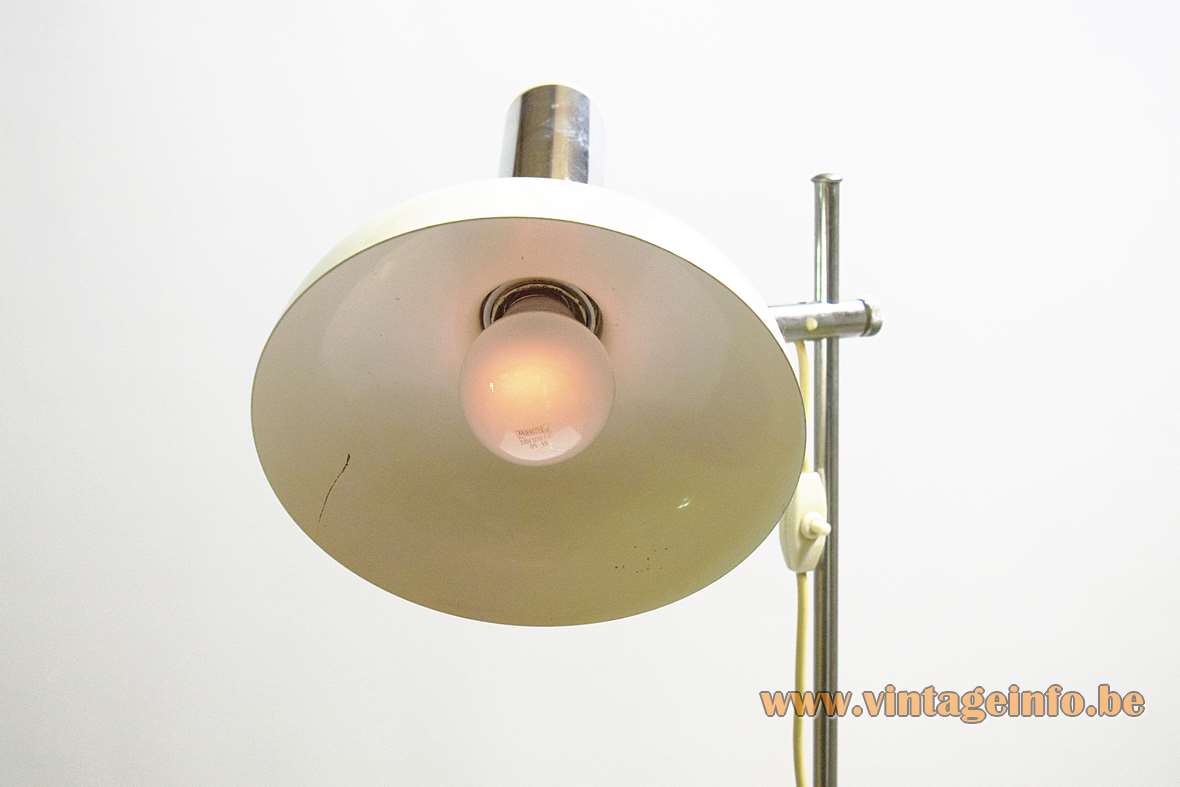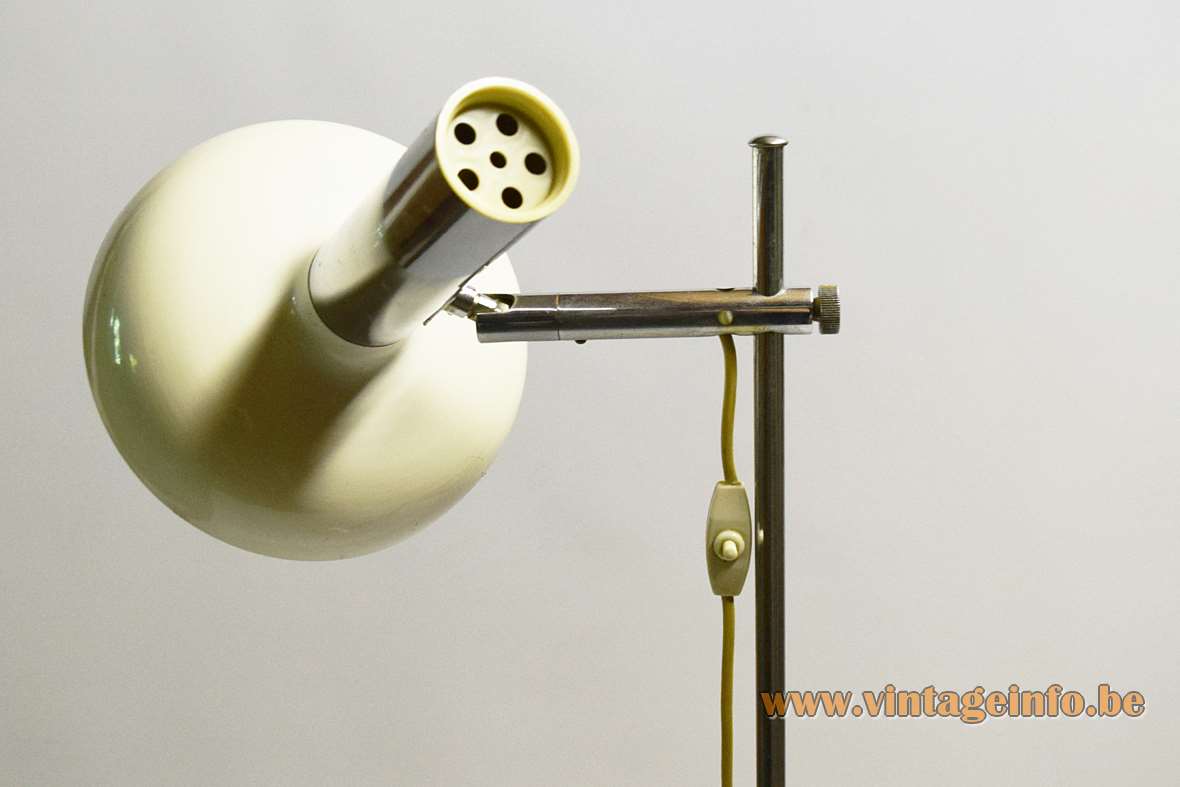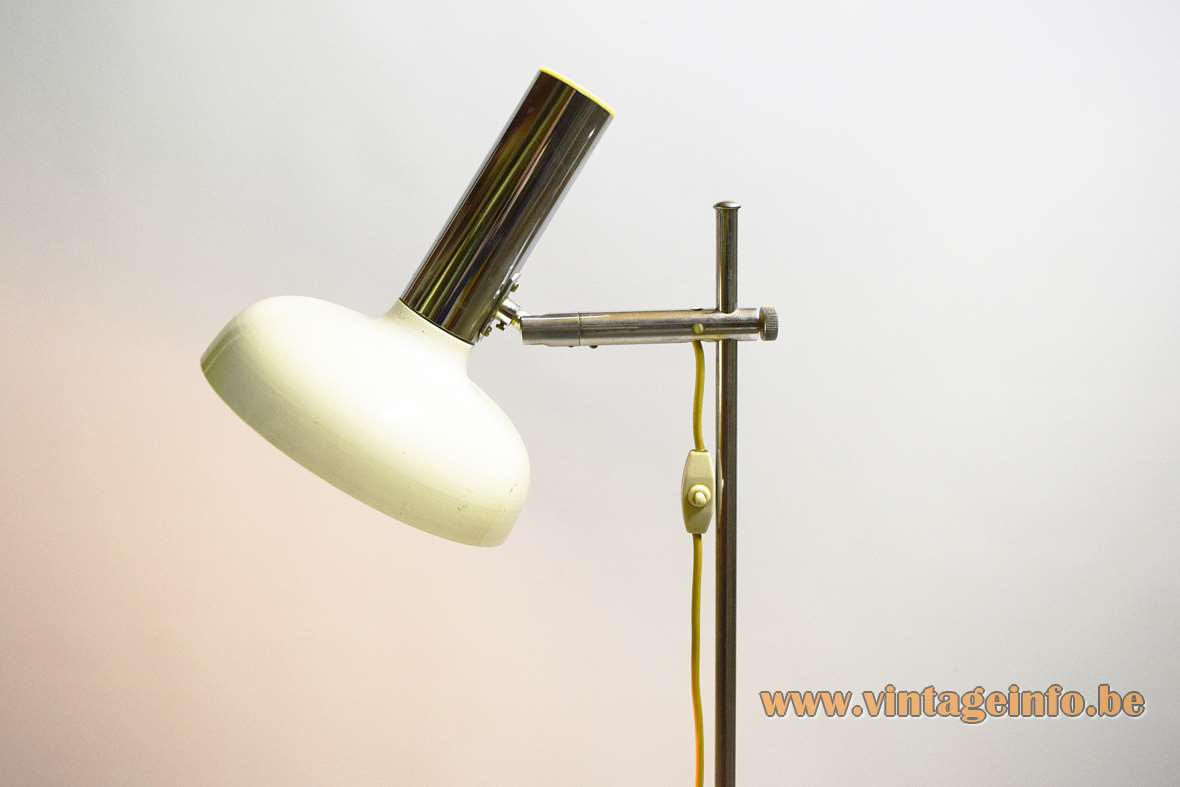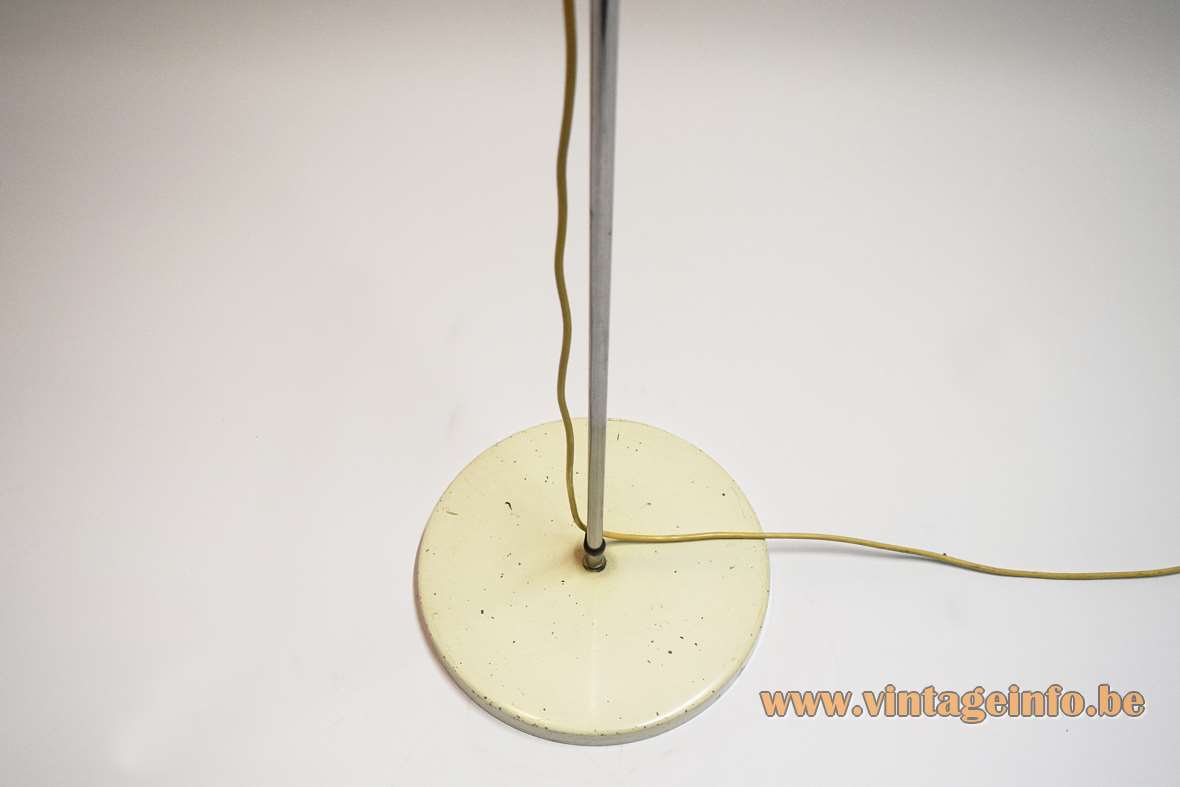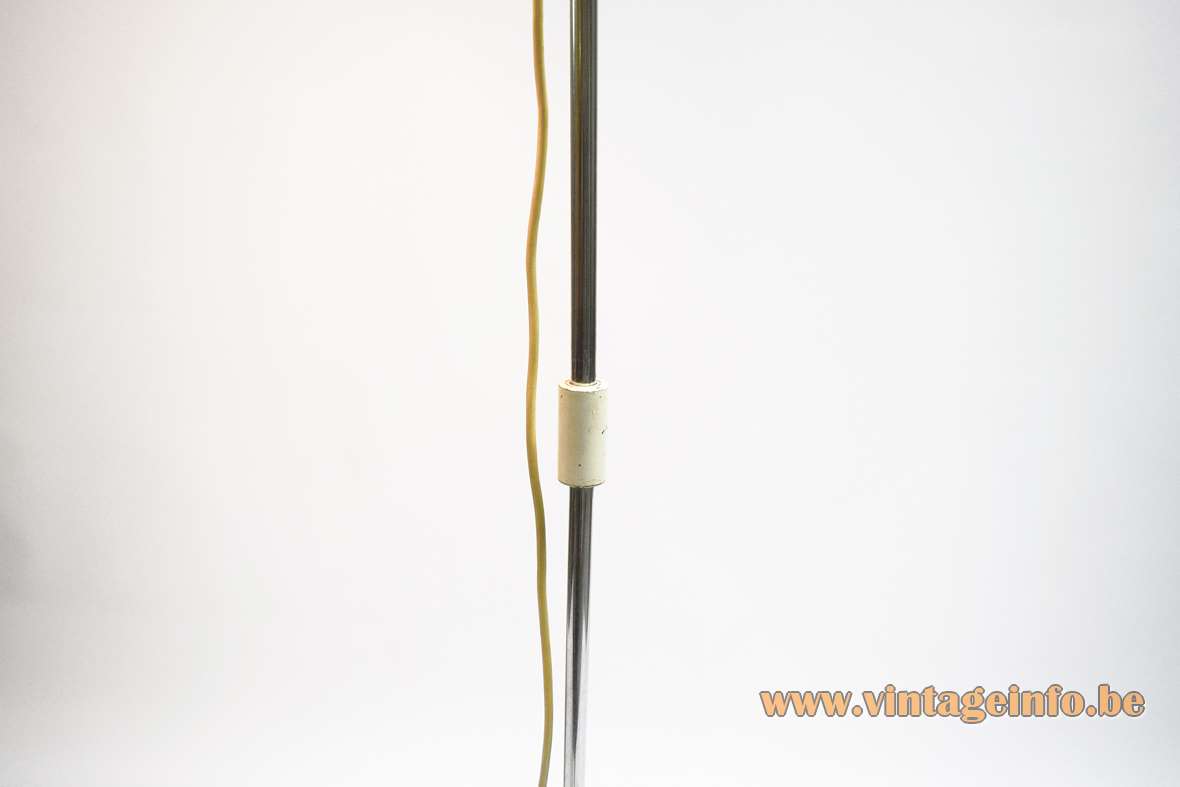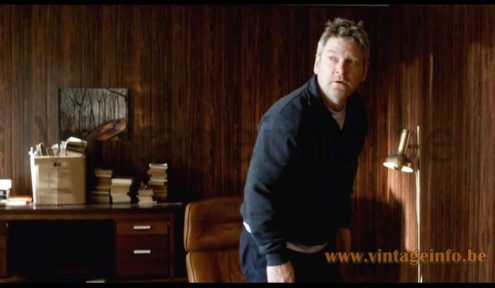Lamps in the movies
A brass Solken Leuchten floor lamp was used as a prop in the 2008 British TV series Wallander. Here in season 1, episode 1. Starring Kenneth Branagh, Sarah Smart and Tom Hiddleston. Many other lamps appear in this series.
Links (external links open in a new window)
OMI – Otto Meinzer GmbH & Co website
Gebrauchmuster – Wikipedia (in German)
Koch & Lowy OMI floor lamps… – Google Images
Koch & Lowy Floor Lamp
First of all, the Koch & Lowy OMI story is a HOAX!
Materials: Round white painted flat metal base. Cast iron counterweight inside the base. Chromed iron rods. White painted iron middle part. Chrome ornamental knurled screw. Chrome OMI knee joint. Some chrome parts. Chrome tube. Adjustable white painted round aluminium lampshade. Bakelite E27 socket.
Rod: 140 cm / 55.11”
Lampshade: ∅ 20 x 25 cm / 7.87 x 9.84”
Base: ∅ 30 cm / 11.81”
Electricity: 1 bulb E27, 1 x 75 watt maximum, 110/220 volt.
Any type of light bulb can be used, not a specific one preferred.
Period: 1960s, 1970s – Mid-Century Modern.
Designer: To be appraised.
Manufacturer: Sölken-Leuchten, Arnsberg, Germany.
Other versions: This floor lamp exists as a double light floor lamp. The lampshade is used for several other lamps, among which a wall lamp. The design changed a bit over the years. In the 1970s they made a more elegant base. Made in many colours and in brass and chrome.
These floor lamps were produced for many years and were probably the biggest success for Solken-Leuchten. Many other European companies sold these lamps.
Koch & Lowy
When you do a search on the internet for the OMI mark on the chromed knee joint, you always find lamps that are described as lights designed by Koch & Lowy for OMI. Koch & Lowy is not a design team, but an American light company and has got nothing to do with this lamp. Today Koch & Lowy is owned by Chapman Manufacturing Company, Inc. from Avon, Massachusetts. Koch & Lowy used OMI joints for some lamps they produced and stamped their name next to the OMI logo, hence the confusion.
Some say OMI Switzerland, but there is nothing to be found about a Swiss company with that name. Others say OMI DBGM, because sometimes it is written on the knee joint.
DBGM is not some type of company, but it is German for utility model, “gebrauchsmuster” in German. Only used in Germany and Austria: Deutsches Bundes-Gebrauchsmuster. To say it simple, the knee joint is made by a company named OMI and the system is licensed for some period, most of the time 10 years: the small brother of a patent.
Sölken-Leuchten
Josef Sölken GmbH & Co. KG Leuchtenfabrik was founded in january 1950 as a family business. Over the years they produced and sold many lamps. Many of them were also sold by Massive from Belgium. The company Sölken was declared bankrupt in 2001, it had been in trouble for some time. Sölken-Leuchten was a client of OMI and used OMI parts for most of their lamps with some joints in it.
The Briloner lighting company owned by the Hustadt family has taken over the high-voltage system and in the low-cost Soelken systems compatible systems. The rest of the company was acquired by S-Leuchten Verwaltungs GmbH, also from Arnsberg. Today Sölken-Leuchten is owned by Stefan Schrader from Lichtservice Schrader in Hamburg.
OMI
The OMI company is Otto Meinzer GmbH & Co Metallwarenfabrik from Iserlohn in Germany (Otto Meinzer Iserlohn). It is a manufacturer of chromed brass joints for the lighting industry. The joints are marked with the OMI mark. The company was founded more than 50 years ago. They never produced lighting.
Companies that uses OMI parts are among others: Atelje Lyktan Sweden, Massive Belgium, Fase, Spain. Hala, The Netherlands, Hustadt Leuchten, Germany, Abo Randers Denmark and many others.

